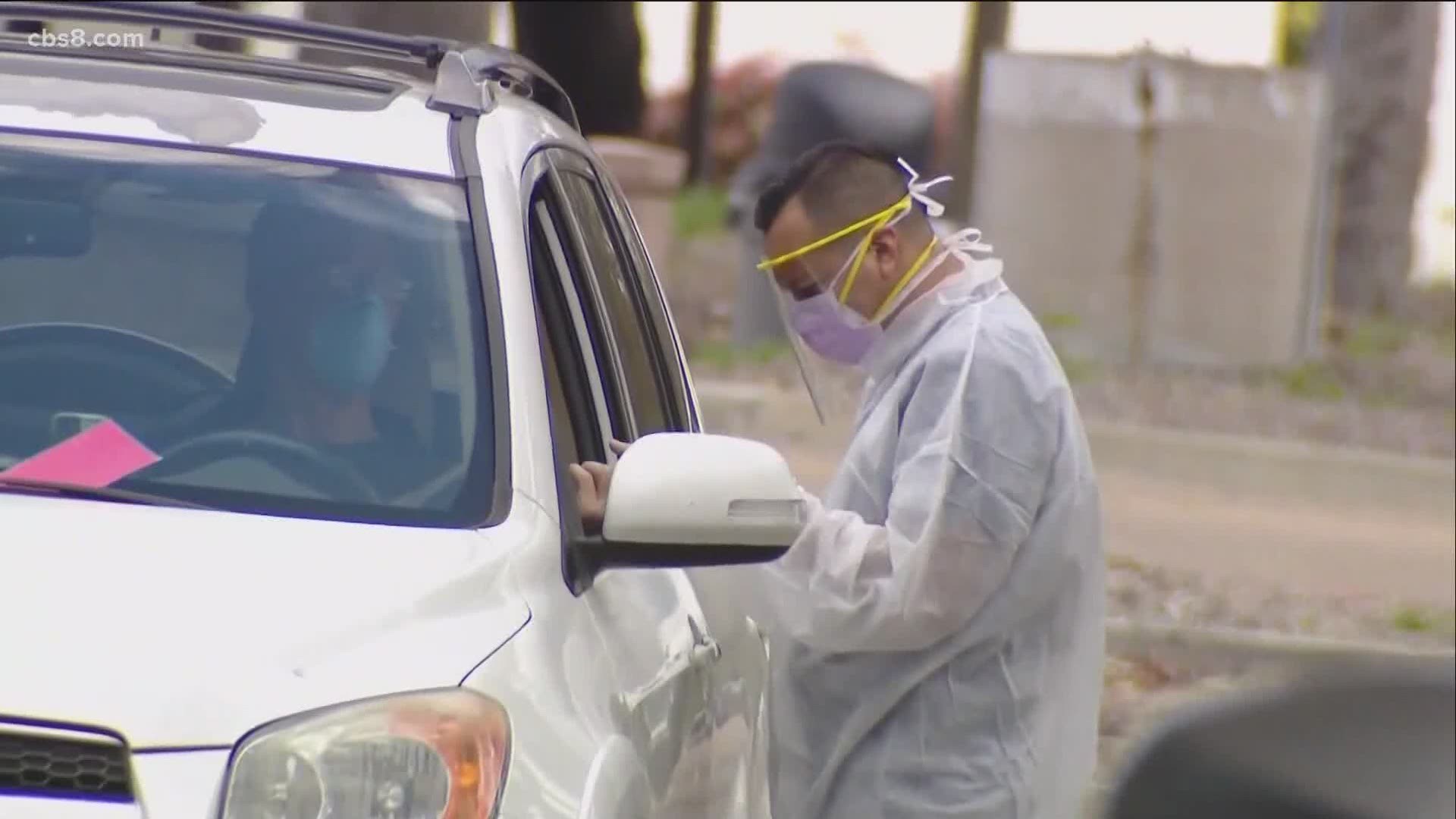SAN DIEGO — Some communities in San Diego County are getting hit by both COVID-19 and by high unemployment claims. Of the 10 zip codes with the highest number of cases, half are also in the top 10 for unemployment.
Unemployment claims are highest in zip codes where the number of cases is on the rise. Historically disadvantaged neighborhoods like San Ysidro, Otay Mesa, and Logan Heights were already facing 6% unemployment. Now, Logan Heights (92113) has the highest percentage of unemployment at 34.8%. The zip code also had 91 confirmed cases, which is the eighth-most in San Diego County. Conversely, National City (91950) had the fourth most confirmed coronavirus cases - 114 as of Monday evening - and the sixth-highest unemployment at 28.8%.
A report from SANDAG looks at the economic impact. The data here displays the economic impact in different communities.
City leaders said many of these same communities are also home to lower-wage essential workers who may be more vulnerable to contracting the virus. Before the report’s release, government leaders in some of these communities said many residents worked or traveled outside of their home zip codes for essential functions. Tracing data has not been released showing where they may have contracted the virus.
A SANDAG analysis confirmed the assertion and found many who are unemployed worked in the hospitality industry. Before the pandemic, it represented 447,900 jobs, or 28% of the region’s unemployment. While some restaurants and businesses are still open in a limited capacity, many have laid off workers because of decreased demand or closed altogether.
“We have a strong population of service providers, service workers, tourism workers that have been hit really hard,” said San Diego City Councilmember Vivian Moreno, who represents many of the hardest-hit areas. "I talked to the mayor just last week, and I stressed the fact that there's going to have to be more attention from the City of San Diego.”
Before the outbreak, on March 7, the county had an unemployment rate of 3.3%. Logan Heights had the second-highest rate in the region at 6.4%. San Ysidro had the highest unemployment at 6.6%. By the end of March, one week after the stay-at-home order began, Logan Heights’ unemployment roughly doubled.
The neighborhood’s coronavirus cases were initially average with the rest of the county but began to increase faster than average within a few weeks. On March 31, the first day zip code-level data was made available, there were 13 confirmed cases. It quadrupled to 54 by April 15 and increased to 91 by April 27.
Some of those hit hardest by the virus and unemployment have, historically, had less access to healthcare and a predisposition to underlying health conditions. County leaders emphasized there is assistance to those who may have lost their jobs and with it, their health insurance. However, the county said on Tuesday that it does not currently have data on health insurance coverage for those with coronavirus.
"It’s very important that as folks are losing jobs and need that help that we have that safety net,” said Nick Macchione, Director of San Diego County's Health and Human Services Agency. “[Public] health insurance for us in California is MediCal.”
He encouraged those in need of insurance or other resources to call 211.
Health officials hope to ease restrictions in place for coronavirus over the next few weeks and months, but SANDAG estimates the economic impact could last for a year or more because of the region’s reliance on hospitality. New measures to maintain social distancing and other protective guidelines could also adversely affect businesses and customers.
“It feels like a double whammy in San Ysidro. It feels like a double whammy in La Jolla. It feels like a double whammy everywhere,” said Moreno. “I was out at a food giveaway with Hearts & Hands Working Together and the amount of people that are seeking help is just tremendous, and, I actually think there's probably more people at home that maybe don't realize that they need help and that that help is out there for them.”
The coronavirus dashboard seen below displays how many people in different communities have tested positive for COVID-19.

